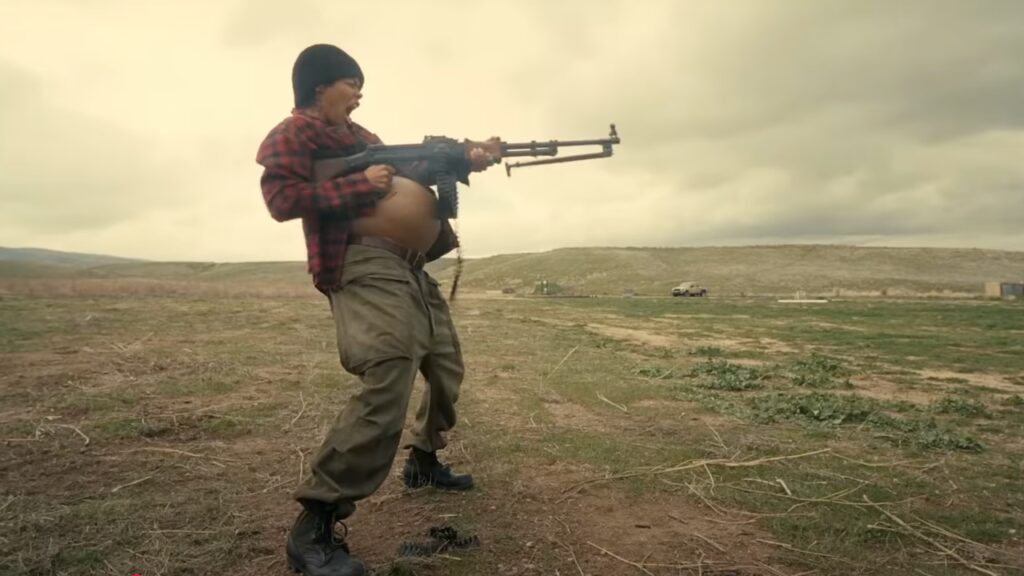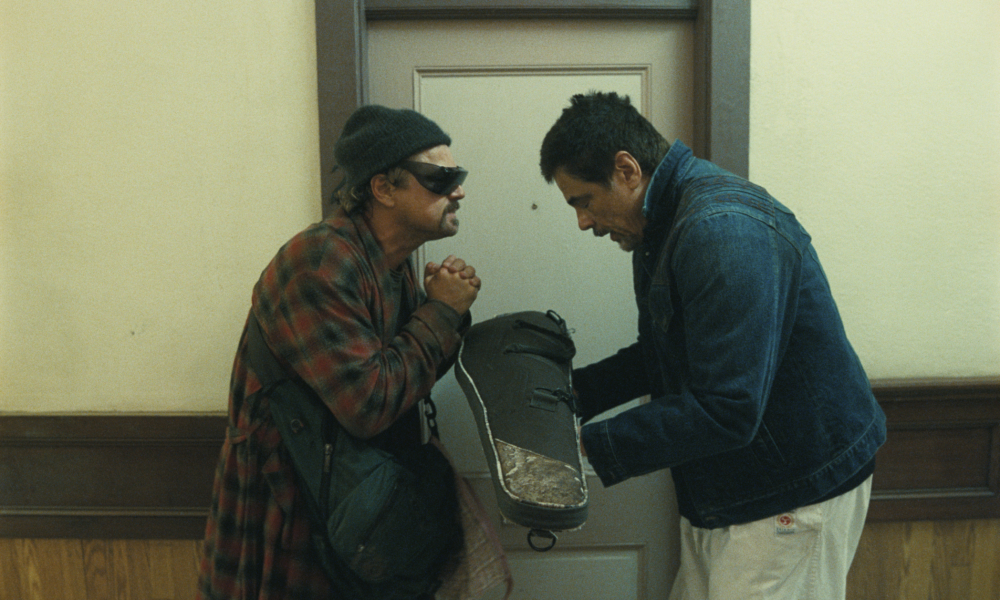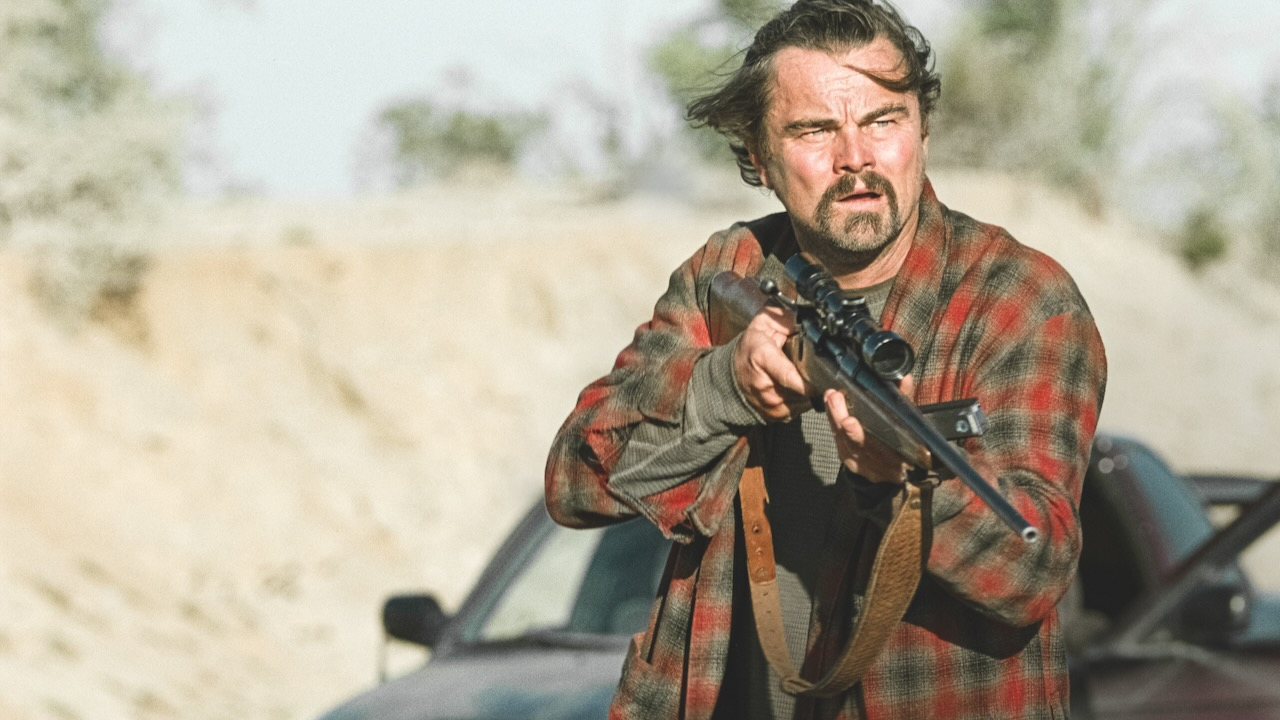Influenced by Thomas Pynchon’s novel, this film is bound to have a unique development. It’s very refreshing to see a Paul Thomas Anderson-style story fully in a contemporary setting. His other films usually have a certain historical or nostalgic aura, being set in the early 2000s, the 1970s, and earlier. In this film, no phone is allowed for the teenage girl, and analoge techs are preferred for safety reasons! So the atmosphere still wasn’t disturbed by the phone screens or other fancy new devices.
The representations of different minorities here are directly connected to the highly political film topics. We can say the representations of certain demographics is the main theme. Teyana Taylor plays Perfidia Beverly Hills, who is an important member of the French 75, an American far-left militant group. After she sexually humiliated the captain, Steven J. Lockjaw, he became obsessed with her. There is a scene where he was peeking at her from afar through binoculars while masturbating in his car. The camera switched between him holding the binoculars and Perfidia’s body in his gaze and in the oval frame of the binoculars. Later on, she got captured and exchanged the members’s information to avoid prison, abandoning her partner, newborn daughter, and also Lockjaw at the end. The character of Perfidia is rebellious, hotheaded, active, autonomous, irresponsible, sexy, and brave, and yet lacking a courageous dignity. This film portrayed certain scenarios that are the typical fetishization of Black women: a dangerous sexual being that allures (white) men into the trap, from the view of Lockjaw. The monologue of “Jugglepussy” during the bank robbery is a version of this archetype, while other types of portrayals are also present. Outside Leonardo DiCaprio’s Pat/Bob and Perfidia, the other interracial relationship couple (Wood Harris and Alana Haim’s characters) in the French 75 was also highlighted by their dialogue (“my little white girl”). The Christmas Adventurers Club, a far-right white supremacist secret club Lockjaw was desperately trying to join, sees interracial relationships as an absolute taboo, which triggered the series of events that happened in the last half of the movie.

The manners of the Christmas Adventurers Club and Lockjaw are designed as a mockery of the stupidity of white supremacists. On the contrary, the Hispanic families and community under the leadership of Sergio St. Carlos are vivid, warm, casual, and insanely efficient with ease. The highlight of the whole movie for me is this fluid operation in Sergio’s house/building. It’s so heartwarming and thrilling at the same time to see Sensei Sergio calmly and confidently introducing Bob to his family members at a hectic moment. His last sentence, “a few small beers,” in the film has become a beloved phrase. With the anti-immigrant policies currently peaking in the US, especially with its hostility towards Hispanic people, showing this community and the release of immigrants from the detention center is a catharsis on the big screen.

A nonbinary character, alongside Bob’s questioning their pronouns, also appeared. They cracked under the military’s pressure and ratted out Charlene’s phone number to Lockjaw’s subordinate. It can be understood as they especially feel danger in a military environment, as its ideology oppresses their existence.
One Battle After Another immediately reminds me of Eddington in the sense of presenting a fictional militant leftist group. In the current political climate, especially in the US, portraying fictional far-left groups is also precarious, as there isn’t a well-recognized organization that is currently conducting activities and making impacts. However, in these high-glossing auteur films, their existence and how the events are going to play out have already been imagined and illustrated. In comparison, this film gained more insights and compassion from painting Sergio’s community than the French 75. Even though we heard Perfidia’s inner monologue, the story of Perfidia and the French 75 most likely became a tool for telling the stories of Bob and Lockjaw. The film tends to aim for a forgiving parent-daughter relationship around Charlene. Bob wasn’t a responsible father in everyday life outside of this exhilarating adventure. As some people may put it: he is a flawed father trying to do his best for his daughter, despite not being healed himself. The letter in the ending expressed a mother’s love, trying to amend the past mistakes. For the cinematography, the aerial shots from helicopters when Perfidia was being chased are anxious and grand within context. The car chasing scene on the hilly road is unique and shows Charlene’s witness. Overall, the film is a bumpy and emotional journey with reconciliation as the destination. It comes down to the question if the sparks and its courage of telling a rebellious story lead to reconciliation in the hearts of the audience.

Comments